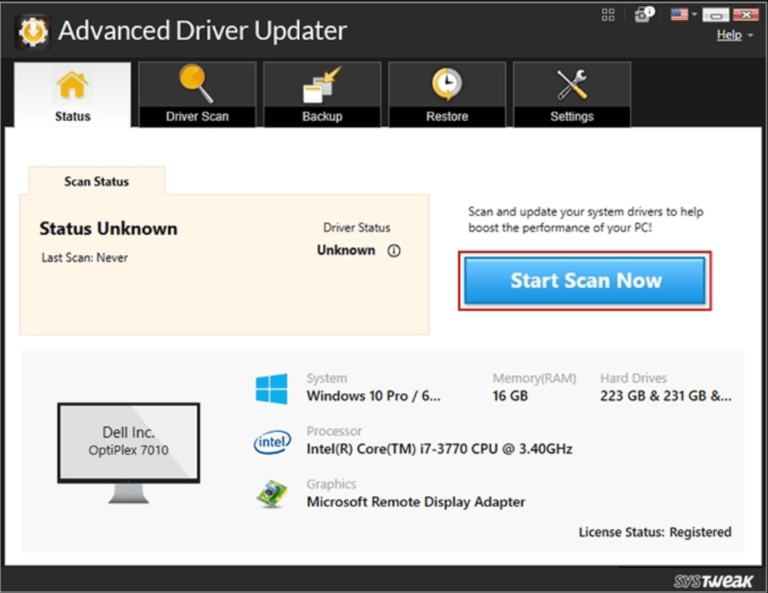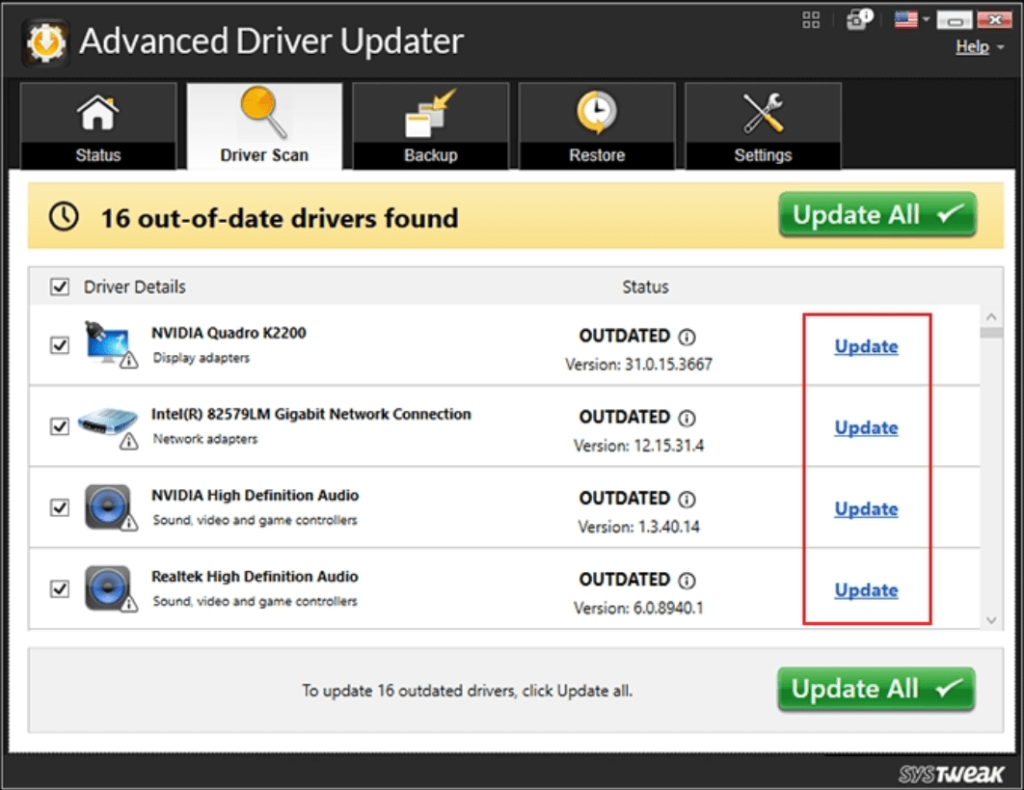
Device drivers are the communication gateway for the software/ hardware and the operating system. In Windows, there is a constant need to keep all the device drivers updated at all times. This is required in order to keep your system running smoothly as outdated drivers can lead to sluggish performance, device incompatibility issues, or even system crashes. This can turn your Windows experience into a frustrating ordeal.
In this blog post, we will explore two different ways to update your drivers — the automated (and easiest) one, and the manual one. You will also learn how to schedule your driver updates and fix any driver related issues that you may have with one of the best driver updater tools. So, without further ado, let’s get started.
I. Updating Drivers Using Advanced Driver Updater
Advanced Driver Updater is one of the best driver updater software that offers fast, easy and reliable way to update your drivers — all at once. It can detect outdated, corrupted, incompatible and missing device drivers. It provides a comprehensive report of all the device drivers on your machine, so that you can choose whether to update all or few drivers of your choice. Best of all? It offers a free edition as well.
Key Highlights of Advanced Driver Updater
a. Large Database
This is a standout feature as Advanced Driver Updater has a pool of a vast variety of device drivers. This comprehensive coverage of a wide variety of the drivers for hardware and software used in Windows makes it a versatile application.
b. One-click Updates
This feature lets users update all the outdated drivers at once. The Update All button is provided for those who are in a hurry or don’t want to indulge in checking all of the device drivers in detail. You can quickly click on the Update All button and get all of the outdated drivers updated in single-click.
c. Backup and Restore Functionality
The backup and restore functionality ensures that in the rare event of an updated driver causing compatibility issues, you can easily restore the previous version and revert it to the stable state.
d. Scheduling Updates
This feature updates drivers automatically on the given time and date. You can schedule the Advanced Driver Updater to run a scan and update the drivers on your convenient date and time periodically. You can set daily, weekly or custom schedule as per your requirement.
e. Intuitive Interface
Advanced Driver Updater is designed keeping the ease of use for both beginners and experienced users. It has a very simple-to-understand interface which makes it easy to navigate. You can find the Scan button on the home screen, along with other details such as your hardware information. It helps with making decisions on the compatibility of the devices used with the Windows PC.
How to Update Drivers Using Advanced Driver Updater?
It is fairly easy to update drivers on your Windows with this driver updater utility. Here are the steps to follow:
Step 1: Download Advanced Driver Updater from its official website. Follow the on-screen instructions to install it on your computer.
Step 2: Launch the application and click on the Start Scan Now button.
Step 3: The scan will take a short while to analyze the state of your device drivers. Thereafter, you will be presented with the review results. The outdated drivers list will show you the information on each of the device drivers. Here you can review them and move on to the next steps.
Step 4: Once you are done with the review, click on the Update button next to a driver you want to update.
Remember, the free driver updater program has a restriction: You can update one device driver at a time. Moreover, you can only update limited number of drivers in a day. The premium plan will let you update all the outdated drivers at once with the Update All button.

Step 5: Restart your computer once all of your drivers are updated. This is essential for the changes to take effects.
That’s it, you’re good to go now.
Scheduling Driver Updates
If you want to streamline the process of driver your updating, there’s an in-house scheduler feature as well.
Step 1: Open Advanced Driver Updater, and click on the Settings.
Step 2: Click on the Scheduler option.
Step 3: Select Schedule a Scan.
Step 4: Choose your scheduling frequency (daily, weekly, or monthly) and a convenient time.
Step 5: Click on OK.
II. Updating Drivers Using Device Manager in Windows
If you would rather wish to update the device drivers manually without using a third party tool, we’ve covered you as well.
What’s Device Manager?
Device Manager is an in-house tool in Windows that lets you manage your computer’s hardware and drivers through a single window. You can use its treeview interface on the left to browse through different hardware and perform various tasks such as disabling specific hardware components, updating their drivers, and rolling-back your drivers to an earlier state.
How to Update Drivers Using Device Manager?
Step 1: Open Device Manager on your computer by pressing the Windows Key + X and selecting it from the list.
Step 2: Device Manager will show you the list of the devices present on your computer. Now you have to right-click on a device that you want to update. Say, you want to update the Display Adapter, expand that category. Right click on your display adapter.
Step 3: Now select the Update Driver option. This will prompt you to make a selection in the new window.

Step 4: Here, select Search automatically for drivers. Next, you will see a scan looking for a suitable driver update. This will download and install the driver on your computer.
Step 5: Don’t forget to restart your Windows!
Verdict
Keeping your drivers updated ensures you get optimal performance, enhanced compatibility and seamless computing experience. You can update your drivers using Device Manager or a third-party tool, such as Advanced Driver Updater. The latter offers a smart and efficient way to manage your system drivers with ease. Its user-friendly interface, robust features, and comprehensive database makes it an excellent choice for both beginners as well as advanced users.